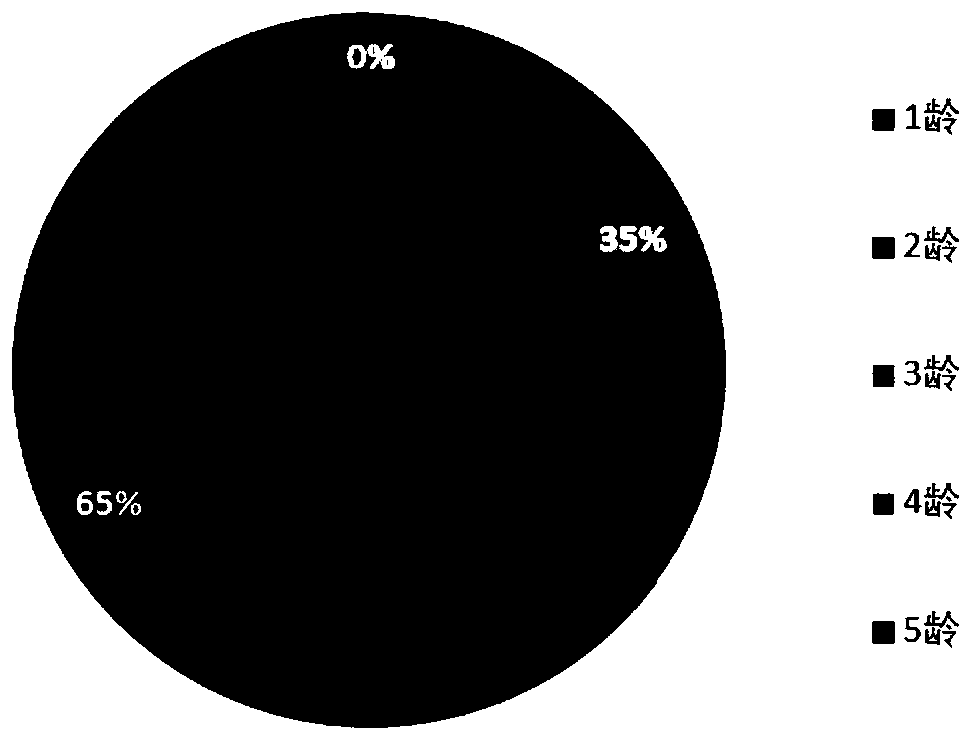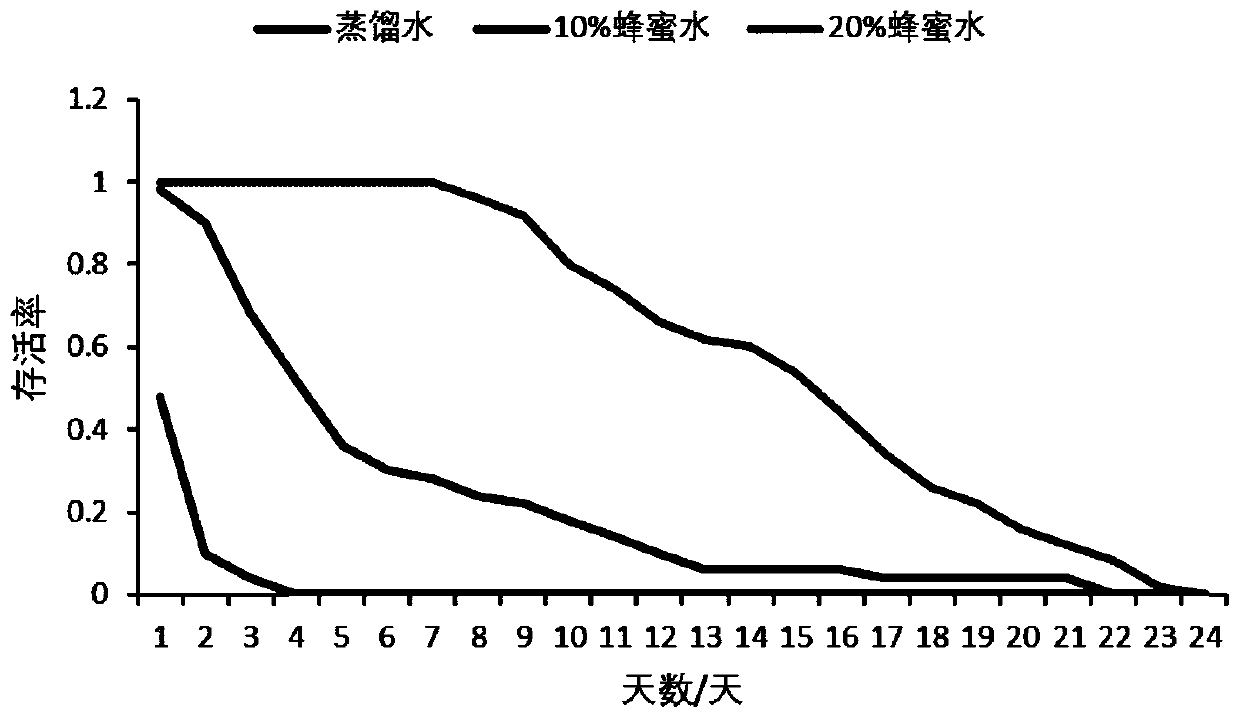Artificial propagation method and application of psylla chinensis parasitic wasps
A technology of Psyllium psyllid and parasitoid, which is applied in the field of artificial propagation of Psyllium psyllid parasitoid, can solve problems such as being in the blank, and achieve the effects of small space occupation, avoiding pesticide residues, and easy operation
- Summary
- Abstract
- Description
- Claims
- Application Information
AI Technical Summary
Problems solved by technology
Method used
Image
Examples
Embodiment 2
[0037] 3.1 The preference of the parasitoid wasps to different ages of Psyllid
[0038] Prepare a 9cm petri dish, prepare 2% water agar, pour it into the petri dish, the thickness is about 3mm, take the third and fourth leaves of pear seedlings, insert the petiole into the agar for moisturizing, and connect the leaves from one instar to Ten fifth instar psyllid nymphs each introduced a pair of parasitoids within 24 hours of emergence, sealed with plastic wrap, and pricked 50 small holes in the plastic wrap with a No. 1 insect needle for ventilation. Put it into an incubator, remove the parasitic wasps after 24 hours, continue to cultivate, and observe the number of parasitic psyllids of each age, a total of 8 repetitions. The result is as figure 1 ,Depend on figure 1 It can be seen that the parasitoid wasps prefer to parasitize the fourth and fifth instar psyllid nymphs but not the first to third instar psyllid nymphs. Therefore, selecting four to five instar psyllid nymphs...
PUM
 Login to View More
Login to View More Abstract
Description
Claims
Application Information
 Login to View More
Login to View More - R&D
- Intellectual Property
- Life Sciences
- Materials
- Tech Scout
- Unparalleled Data Quality
- Higher Quality Content
- 60% Fewer Hallucinations
Browse by: Latest US Patents, China's latest patents, Technical Efficacy Thesaurus, Application Domain, Technology Topic, Popular Technical Reports.
© 2025 PatSnap. All rights reserved.Legal|Privacy policy|Modern Slavery Act Transparency Statement|Sitemap|About US| Contact US: help@patsnap.com


